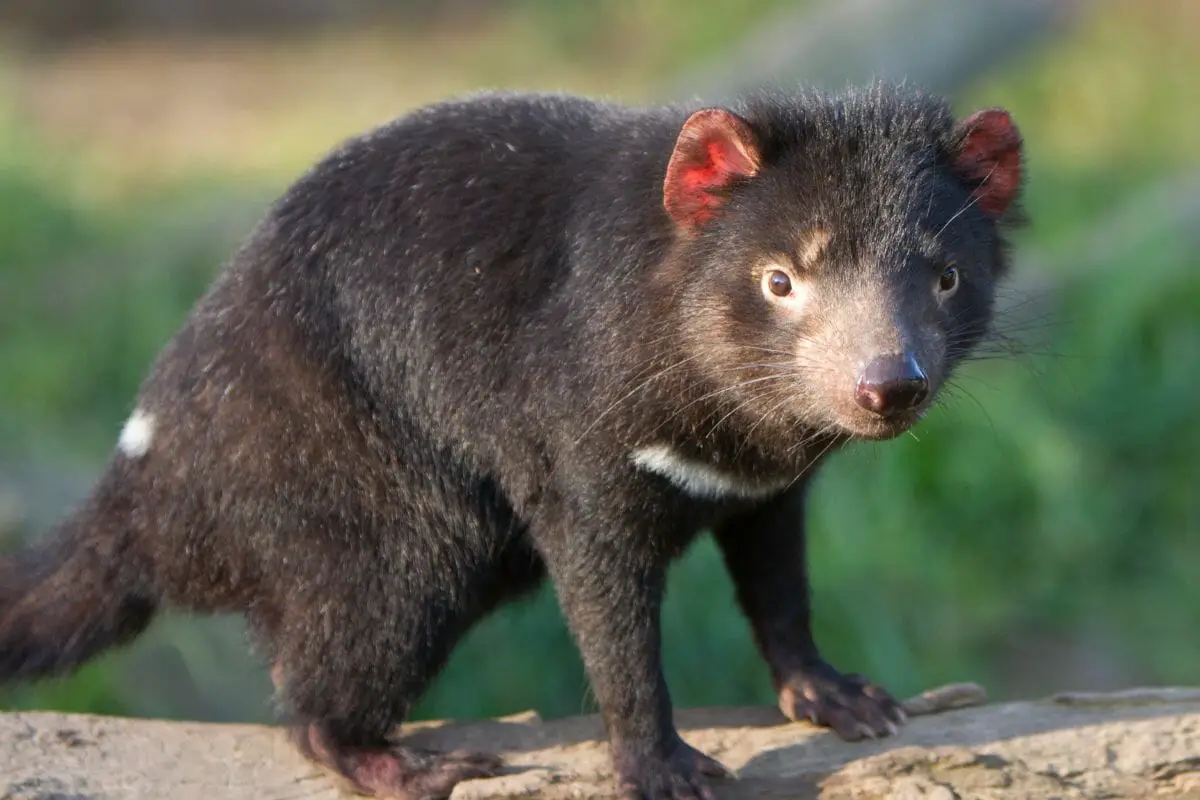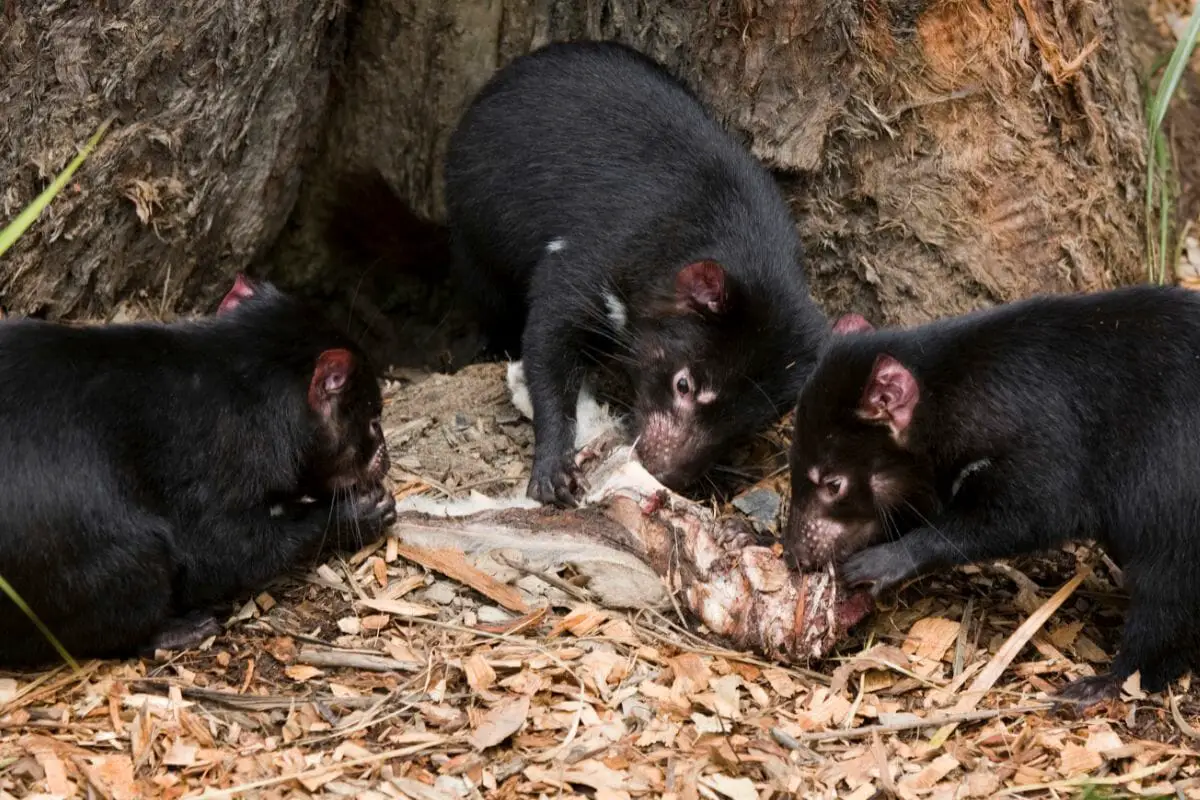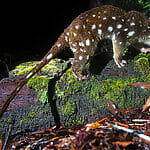The Tasmanian “Tassie” devil is a superstar representative of Australia’s catalog of unique animals.
Often ambiguous, these tiny creatures are mysterious and too interesting for us not to focus on them.

In this article, we wanted to share 12 amazing and fun facts about the Tasmanian devil that we bet you will love!
So, if you want to learn more about the inspiration behind the worldwide famous Taz from Looney Tunes, keep reading below!
They Can Only Be Encountered In Tasmania
Even though Tasmanian Devils were once common across the whole of Australia, they are currently only encountered in Tasmania.
They have adjusted successfully to a diverse range of settings in Tasmania, from coastlines to forest areas to suburban areas.
And as such, instead of being affected by environmental changes, their eradication from Australia’s main island is thought to be due to the emergence of dingoes, which never made it to Tasmania to jeopardize the life of these little devils.
Their Fur Is Very Coarse
They are not sweet or huggable. Tasmanian Devils resemble bear cubs or large-boned puppies, weighing less than 30 pounds when fully developed.
If they aren’t confrontational, they have a cute appearance.
However, if you ever get the opportunity to come close to a baby devil, you will realize how abrasive and scratchy their furs are from that young of an age.
And because they live by themselves and only come out during the nighttime, they are not outgoing or amiable.
They Produce A Loud, Irksome Shriek
In case you assumed frogs and crickets made the most audible evening sounds, you were, unfortunately, wrong.
Tasmanian ‘devils’ are called this way because of the sounds they produce.
Indeed, the very first European colonists to go into Tasmania (the southern state in which you can encounter them) suddenly heard extraordinary, blood-curdling screams and grunts from deep inside the bushes, leading them to believe that evil spirits had trapped them.
Thus, the name Tasmanian ‘devil’ was given to this little creature that makes a lot of unusual sounds – from a cough and a sniff to a snort or even a sneeze – as a means of scaring off other creatures or to avoid any unfriendly confrontations.
They Bite So Strong That They Can Even Crush Our Bones
Yes, you read that right; Tasmanian devil’s bites are the fiercest and hardest ones in the world among mammals their size.
Their large heads make it possible for them to expand their jaws close to 80° in width, while they are also powerful enough to smash bones.
These animals can bite through the toughest metallic materials and then even break open farm animals as well as other animal cages.
Devils eat games or carcasses with their amazingly strong and deadly jaws, eating all the parts of their prey.
Their Tails Are A Fat Storage Area
Devils, as with all marsupials, store fat in their tails, which increase in size like people’s beer bellies.
A notably curvaceous tail indicates a healthy Tasmanian devil and given that they can consume up to 40% of their weight daily, their tails can get quite thick!
They Nap Inside Their Prey’s Bodies
Tasmanian devils have unusual eating behavior.
These strange wee beasties enjoy sleeping inside decomposing carcasses (known as “carrion”) to wake up and carry on with snacking.
Although it might sound gory, Tasmanian devils contribute to keeping places clean and devoid of parasitoid wasps and maggots by feeding on dead animals.
A Newborn Tasmanian Devil Is As Big (Or Small) As A Grain Of Rice
The female devil gives life to 20-40 babies at a time as each one of them is no bigger than a grain of rice.
These babies, nevertheless, must run to their mother’s pouch, as it only contains four mummeries. What a difficult start to the game!
Due to their small infant size, those who survive can spend three months in the female’s pouch.
They Are The World’s Biggest Carnivorous Marsupial

This designation has been endorsed by the Tasmanian devil for almost a century now. Tasmanian devils are carnivorous and consume nothing but meat.
They are typically hunting birds, snakes, as well as other mammals like small kangaroos, but they may also consume carcasses.
They employ their enormous jaws to their advantage, wolfing down pretty much everything they can get their teeth into, smashing and voraciously feeding on bones and everything else.
In Case Of A Confrontation, They Will Yawn
We already mentioned how Tasmanian devils will make all kinds of weird noises but when they want to avoid or deal with any confrontations, they will most usually end up making a yawning sound.
However, they are generally shy and meek creatures, posing no threat to human beings unless they are threatened or caught.
Whenever they are attacked, they make bizarre yawns that appear very intense. This attitude is more a manifestation of stress and uncertainty than of hostility.
They Are Great At Climbing On Trees
You’ve probably heard of Tasmanian devils’ skills in tree climbing, which is indeed very true.
Young Tasmanian devils are significantly more flexible than their seniors and can climb trees. Why is that?
Because older devils are known to feed on the younger devils whenever they experience great hunger, this climbing activity makes it possible for younger devils to flee.
Tasmanian devils are also great at swimming and running, as they can catch speeds as high as 24 km per hour and keep running for even 60 minutes!
Their Teeth Don’t Ever Stop Their Growth
Even the teeth of a Tasmanian devil are one-of-a-kind!
These animals are equipped with 42 teeth, just like a dog, but in contrast to dogs, a devil’s teeth continue to grow non-stop throughout its existence, contributing to its incredible capacity to devour the bones of its prey.
They Are Considered Endangered Creatures
“Tassie” devils have been listed as endangered animals for several years now, with one of the main culprits being collisions with cars while attempting to fetch carcasses.
Furthermore, a facial tumor infection is spreading in their community.
Tumors form in the mouths of infected living creatures, preventing them from consuming food.
From the disease’s discovery near the end of the 90s decade, over 10,000 Tasmanian devils have disappeared.
Moreover, these creatures are being sent overseas to partner with foreign zoos to help with Tasmanian Devil population insurance schemes.
Wildlife shelters try to rescue and bring up younger devils in the pouches of females killed on the roadways, and programs aim to isolate and breed disease-free populations.
Tasmanian Devils can be seen in a few zoos, yet the best way to enjoy them is to visit and support a shelter on their home ground in Tasmania.
The Bottom Line
There you have it. These are the 12 fun and interesting facts we wanted to share with you about Tasmanian devils.
These little furry creatures might look cute and small in size, but their powerful jaws are deadly.
And while they will not attack you and try to eat you if you do not threaten them, they will probably leave you safe and sound.
So, if the Looney Tunes creators got one thing right is that these creatures make a lot of weird sounds and are not that sociable!
- What Should I Do If A Koala Bites Me? Safety Guide - 2024-05-30
- Are Kangaroos Born Without Hind Legs? A Fascinating Journey - 2024-05-30
- Animals That Look Like Squirrels - 2024-05-30








